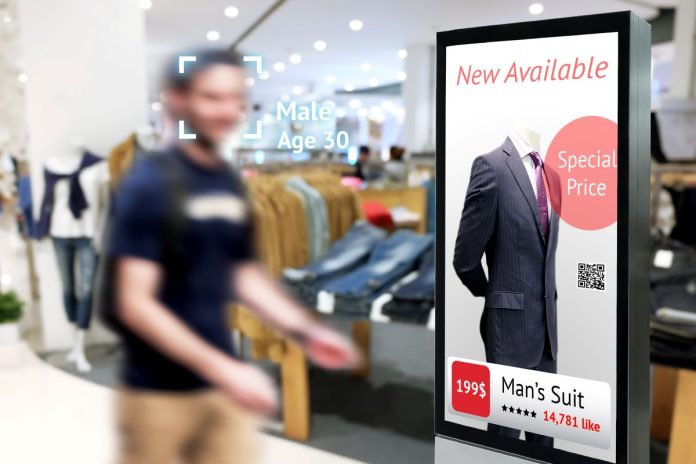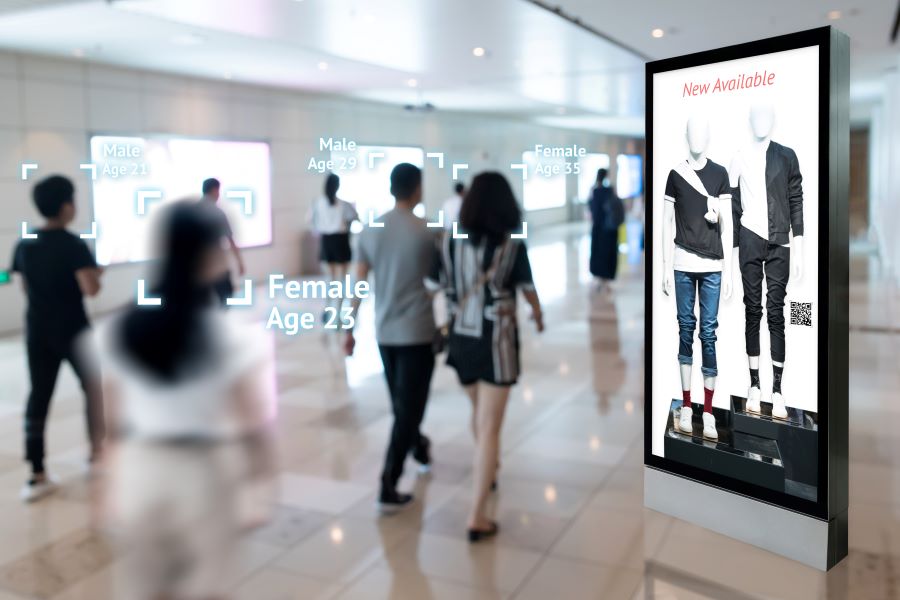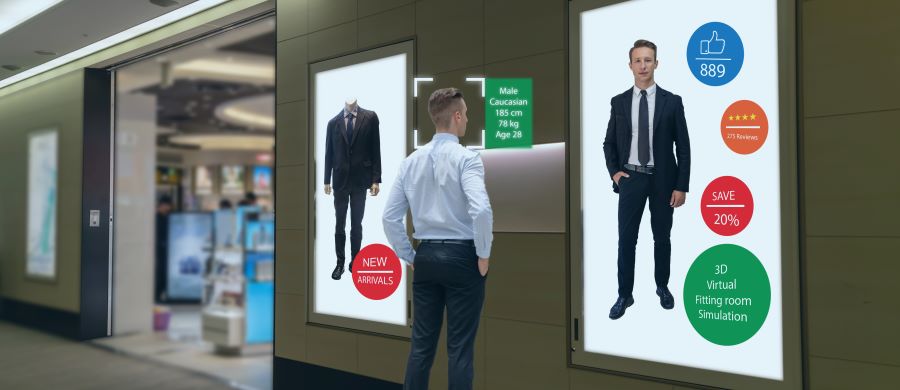
Last Updated on 30th August 2024
The retail landscape is undergoing rapid transformation, with commercial signage displays playing a pivotal role in this evolution. Advancements in technology have enabled retailers to utilise innovative displays that engage customers more effectively, enhance brand visibility, and improve operational efficiency.
This article explores the top trends in commercial and signage displays that are revolutionising the retail industry. We’ll provide insights on how businesses can leverage these trends to remain competitive and deliver a superior customer experience.
The Importance of Commercial and Signage Displays in Retail
Signage has always been a critical component in retail, serving to guide customers and promote products. Traditionally, retail signage was static and limited to simple messages. However, with the advent of digital technology, new digital signage has become more dynamic and interactive, significantly influencing consumer behaviour and enhancing brand presence.
Today’s commercial displays are not just tools for advertising; they are integral to comprehensive customer engagement strategies. Effective signage can attract customers, provide essential product information, and create memorable shopping experiences that foster brand loyalty.

Top Trends in Commercial and Signage Displays
Digital and Interactive Displays
Digital and interactive displays utilise touchscreens, motion sensors, and rich digital content to create a dynamic shopping environment. These displays can be easily updated with new content, making them versatile tools for marketing and customer engagement.
By offering interactive content, such as product demonstrations or customisation options, these displays increase customer engagement and dwell time in-store, leading to higher conversion rates.
Nike’s flagship store in London uses digital displays to offer personalised product recommendations, promotions and interactive experiences, which has significantly enhanced customer satisfaction and increased sales.
Augmented Reality (AR) and Virtual Reality (VR) Displays
AR and VR technologies overlay digital information onto the physical environment or create immersive virtual experiences, allowing customers to interact with products in innovative ways.
These technologies enable customers to visualise products in their own environment or try them virtually, reducing the need for physical inventory and increasing customer confidence in their purchases. Research shows that 61% of consumers prefer retailers that offer AR experiences.
IKEA’s AR app allows customers to place virtual furniture in their homes to see how it fits and looks before making a purchase, improving customer experience and reducing return rates.
Sustainable and Eco-Friendly Signage
Sustainable signage involves using eco-friendly materials and energy-efficient technologies, reflecting a retailer’s commitment to environmental responsibility.
Adopting sustainable signage can enhance a retailer’s brand image by aligning with the growing consumer demand for environmentally responsible practices. According to reports 81% of consumers feel strongly that companies should help improve the environment.
Retailers like Patagonia and Whole Foods use recycled materials for their in-store signage, showcasing their commitment to sustainability and appealing to eco-conscious consumers.

AI-Powered Displays
AI-powered displays use artificial intelligence to analyse customer data and adapt content in real-time, providing a more personalised shopping experience.
These displays can suggest products based on customer preferences, optimise inventory by highlighting popular items, and enhance the overall shopping experience. Retailers using AI-driven displays have seen a 10-20% increase in sales.
Sephora uses AI-powered digital displays to offer personalised beauty advice and product recommendations, boosting customer engagement and increasing sales.
Mobile Integration and Omni-Channel Strategies
Displays integrated with mobile technology and online platforms provide a seamless shopping experience across all channels, allowing customers to transition smoothly from online browsing to in-store shopping.
This integration ensures a consistent brand experience, enhances customer convenience, and drives both in-store and online sales. Reports say companies with strong omnichannel strategies retain 89% of their customers on average.
Zara’s stores use digital displays that sync with their mobile app, allowing customers to check stock availability and place orders for in-store pickup, enhancing the omni-channel shopping experience.

How Retailers Can Implement These Trends
Assessing Business Needs
Retailers should begin by evaluating their specific needs, customer demographics, and budget constraints to choose the most suitable signage solutions. For example, a luxury brand may prioritise high-definition video walls, while a tech-oriented store might focus on AR displays.
And do your research, there will be a reason that Asda are one of a few supermarkets announcing they will reverse the reliance on self-scan machines, and they aren’t going the cashierless stores system of Amazon Go for a reason too! And anyone who’s travelled on a budget airline will question how effective the self-scan baggage check in actually is.
Choosing the Right Technology
It’s crucial to select technology that not only meets current needs but is also adaptable to future trends. Retailers should consider factors such as display size, resolution, interactivity, and compatibility with existing systems. Consulting with a digital signage specialist can provide valuable insights into the best options.
Content Strategy Development
Developing a robust content strategy is essential to maximise the effectiveness of smart displays. Content should be regularly updated and aligned with brand messaging to maintain relevance and engagement. Retailers should use data analytics to tailor content based on customer behaviour.
Measuring Impact and ROI
To assess the success of their signage investments, retailers need to track key performance indicators (KPIs) such as foot traffic, engagement rates, sales uplift, and customer feedback. Tools like Google Analytics and in-store sensors provide valuable data on customer interactions, helping to refine strategies and optimise display performance.

Future Outlook: What’s Next in Commercial and Signage Displays?
Back in 2002’s Minority Report, Tom Cruise is running down a street as the billboards target him directly with personalised ads using his name to get his attention. He later walks into Gap and is asked how the assorted tank tops he bought was working out. The film was set in 2054, but we won’t have to wait that long thanks to IoT.
The Internet of Things (IoT) is the network of physical objects that are embedded with sensors, software, and other technologies. This means your physical presence enables AI face recognition to connect you to other data courses like shopping habits.
Naturally there are a lot of privacy and data protection issues to overcome. But in a less obtrusive manner this could be more personal shopping help and fast food kiosk ordering displays remembering favourites. Hopefully not shouting out publicly as you walk past that your months supply of rash cream is up.
So it’s realistic to expect in clothing stores you will be soon be able to stand in front of a IoT display, that will give shoppers recommendations based on brands and styles you buy, and show you exactly how you would look. This would be useful for fashion retailers as would limit try-ons and display space.
The issues will be if you have to consent first, rather targeted just walking through the underwear aisle.
Emerging Technologies
New technologies such as holographic displays and advanced machine learning are set to further revolutionise retail displays. These technologies promise even greater interactivity and personalisation, creating more immersive shopping experiences.
Predicted Trends
Retailers should prepare for an increased focus on data-driven insights and sustainability in their signage solutions. As consumer expectations evolve, adopting innovative displays will be key to maintaining a competitive edge.
Expert Opinions
Industry experts predict that the integration of IoT and AI in signage will continue to grow, enabling more responsive and adaptive displays that enhance the customer journey. IoT-connected displays will likely become the standard in the next few years.
Conclusion
Commercial and signage displays are no longer just decorative elements in retail stores; they are powerful tools that can drive sales, enhance customer engagement, and reinforce brand identity. By staying ahead of the latest trends and thoughtfully integrating new technologies, retailers can create dynamic and memorable shopping experiences that keep customers coming back.



































